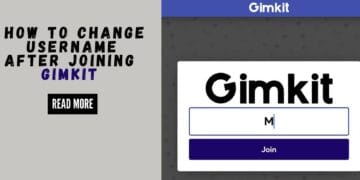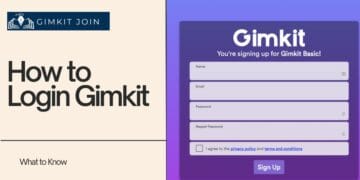True learning goes far beyond simple memorization. It involves analyzing information, evaluating ideas, and applying concepts in new and creative ways. While Gimkit is a fantastic tool for review, if you’re looking for a quick overview of the main features of Gimkit, we have a helpful guide. Its engaging format also makes it a powerful platform for assessing these crucial higher-order thinking skills (HOTS).
As educators, we want to assess for a deeper understanding, not just surface-level knowledge. This article is your comprehensive guide to designing creative Gimkit assessment questions that will challenge your students to think critically. We will explore how to use existing Gimkit features for critical thinking assessment and discuss a wishlist for future tools that could support even more robust Gimkit for critical thinking activities.
Leveraging Existing Gimkit Features for Higher-Order Thinking
You can absolutely push Gimkit questions to check for deep understanding, even with the current set of features. The key is to design your questions with intent, moving beyond multiple choice Gimkit in its simplest form. This approach is a cornerstone of effective formative assessment design.
Using Multiple-Choice for Analysis, Evaluation, and Application

Multiple-choice questions don’t have to be about simple facts. By framing them correctly, you can design powerful prompts that align with the upper levels of Bloom’s Taxonomy.
- Using Scenarios (for Analysis & Application): Write questions that present a short scenario, such as a text, an image, or a small piece of data. Then, ask students to analyze the information or apply a learned concept to solve a problem.
- Example: Present a short graph and ask students to choose the best conclusion based only on the provided data. This assesses their ability to analyze and interpret information.
- Comparing and Contrasting (for Analysis): Craft questions that require students to compare two concepts, ideas, or events. They must identify key similarities, differences, or relationships.
- Example: “Which of the following statements best describes the most significant difference between [Concept A] and [Concept B]?”
- Identifying Cause and Effect (for Analysis): Phrase questions that ask for the cause of a specific event or the most likely effect of a certain action.
- Example: “What is the most likely long-term effect of [Action] on [Outcome]?”
- Evaluating Evidence (for Evaluation): Give a short statement or argument and ask students to judge its validity or identify which facts support it.
- Example: “Which piece of evidence from the provided text least supports the claim that [Statement]?”
- Application of Concepts (for Application): Provide a new situation and ask students to apply what they have learned. They might need to use a formula, a principle, or a specific skill to find the solution.
- Example: “Given [Scenario], which [Formula/Principle] would you apply to solve this problem?”
Using Images for Interpretation & Deeper Thinking

Gimkit allows you to upload images directly into your questions. This is a fantastic way to create more engaging and higher-level questions. Use photos, diagrams, maps, or charts, then ask questions that require students to interpret and understand the visual information. This helps with different ways of thinking and is a core part of designing assessment questions in Gimkit. To get a better sense of how these questions interact with the platform, you might also be interested in Gimkit’s interactive features.
Sequencing (A Creative Adaptation)

Here’s a clever trick: create a question where the answer choices are the steps in a process. The question then asks the student to identify which step comes next or which step comes before a given one. This forces students to understand the full sequence, using a multiple-choice format to test a complex skill.
Wishlist for Future Gimkit Question Types for Deeper Assessment
Gimkit is always evolving. Imagine new assessment question types that could help with EdTech for critical thinking. We dream of a future where these tools allow for a truly deeper and more authentic assessment experience.
- Short Answer / Open Response: This would allow students to explain their thinking in their own words, providing richer insights into their understanding.
- Sequencing / Ordering: A dedicated tool for drag-and-drop ordering would directly test understanding of chronological events or steps in a process.
- Image Annotation / Hotspot: Students could click on specific parts of a picture or diagram, directly showing they know specific details or can label a process.
- Multiple Correct Answers: Students would have to select all the true options, meaning they need a full understanding of a topic, not just one right answer.
Why Assess Higher-Order Thinking with Gimkit?
Designing assessment questions in Gimkit for higher-order thinking has many benefits. It fundamentally changes how you teach and how students learn.
- Provides Richer Insights: It shows you what students truly know—not just if they memorized facts, but if they can use those facts. This is a critical part of formative assessment design.
- Encourages Deeper Processing: When students expect challenging questions, they study differently. They learn more deeply and connect ideas, which helps them truly grasp the material.
- Prepares for Future Success: Big tests and real-world challenges require deep thinking. Using Gimkit in this way builds those crucial skills and prepares students for academic and professional success.
- Makes Assessment More Engaging: Gimkit turns what can be a stressful test into a fun, low-stakes game. Students focus on thinking and are less anxious about performance.
Tips for Teachers: Designing Questions for Deeper Assessment
You want to write better questions, and these tips will help you create a Gimkit question design that promotes critical thinking assessment.
- Start with Your Learning Objectives: Always begin by asking, “What do I want my students to be able to do?” Clearly define the higher-order thinking skills you want to assess.
- Use Question Stems that Prompt HOTS: Use specific words that encourage deeper thinking, such as: “Analyze,” “Compare,” “Evaluate,” “Justify,” “Predict,” and “Why is…”. These stems push students to go beyond simple recall. These ideas are directly from the Bloom’s Taxonomy framework, which categorizes learning objectives by cognitive complexity.
- Provide Necessary Context: Give students all the information they need within the question, including scenarios, data, or short texts. This is crucial for using multiple-choice questions for analysis.
- Don’t Be Afraid to Make it Challenging! Good questions make students think. It’s okay if they are difficult—challenge promotes growth. Celebrate their efforts to think deeply, not just their scores.
- Use the Data to Guide Reteaching: After a game, look at the reports. The data shows exactly where students struggled. Our guide on how to track student progress in Gimkit can help you use this information to focus your reteaching efforts on those tricky ideas.
Frequently Asked Questions About Gimkit for Test Prep
Can I use Gimkit for test prep, and will it help students with higher-order thinking skills?
Absolutely. Gimkit is an excellent tool for test preparation. By designing Gimkit higher-order thinking questions that mimic the style and complexity of standardized tests, you can help students practice applying, analyzing, and evaluating information in a low-stakes, engaging environment.
How does Gimkit help with critical thinking assessment?
Gimkit supports critical thinking assessment by providing a platform for complex question types. The game format encourages students to think through challenging questions, as they are not simply rewarded for fast memorization. The focus is on finding the correct answer, which can be achieved through careful thought.
What is the difference between formative and summative assessment in Gimkit?
Gimkit is best known for its formative assessment design, as it provides real-time data to help teachers adjust instruction. However, with careful design and clear learning objectives, it can also be used for summative assessment design to measure final understanding of a topic.
What is the best Gimkit game mode for timed practice?
The best Gimkit game modes for timed practice include Classic, as you can set a strict time limit. This pushes students to work fast and mimics real test conditions.
How does a game-based platform like Gimkit help with test anxiety?
Gimkit helps reduce test anxiety by making practice feel less like a test and more like a game. The fun, low-stakes environment allows students to practice skills without the pressure of a traditional exam, which can boost their confidence and make them feel more prepared for the actual test.
Conclusion
Gimkit is more than just a quick review tool; it is a powerful platform for fostering and assessing deep learning. By using it strategically to create Gimkit higher-order thinking questions, you can transform your classroom, help students truly grasp the material, and prepare them for success on high-stakes tests and in life.
Remember, the goal is not to trick students, but to challenge them to think critically. Encourage your students and celebrate their efforts to think deeply, not just their final score. To explore all the features and even start your own account, visit Gimkit’s official website.
Do you use Gimkit to get students ready for tests? Share your best ideas in the comments below!



























